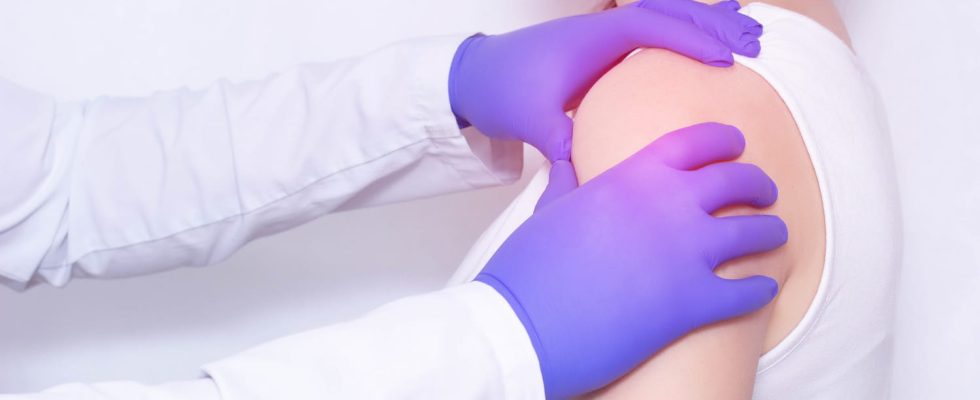Bursitis or hygroma, not to be confused with tendinitis, is an inflammation of the serous bursae located at the level of the joints. It can affect the shoulder, the knee, the hip or the elbow. Is that bad ? How to cure it?
bursitis or bursitis means a serious bursa inflammation located between the skin and a tendon or between a bone and a tissue. It can be located at the level of knee, elbow, Achilles tendon or hip. THE symptoms of bursitis are not specific and depend on the cause and localization of inflammation. What is bursitis? When to consult for bursitis? How to cure it?
Definition: what is bursitis?
Bursitis (also called bursitis) is manifested by inflammation of the bursae, serving as cushions between two tendons, between the skin and a tendon, or between a bone and a tissue. Thus, they can appear everywhere in the body. These bursae are located at the shoulders, elbows, hands, hips, knees, ankles, and feet. They contain synovial fluid and protect the joints from pressure.
What are the different types of bursitis?
There are several types of bursitis. The most common are olecranon bursitiscorresponding to a elbow bursitisIa subracromial or subdeltoid bursitis (shoulder bursitis) and pre-patellar bursitis (patellar bursitis). It can also be located under the Achilles’ tendon.
What are the symptoms of bursitis?
The characteristic signs of bursitis are localized pain, inflammation and redness as well as difficulty in moving the affected limb. “There are no specific clinical signs of bursitis. The pain is not specific”describes Dr. Douglas Levy Biau, sports doctor.
What are the causes of bursitis?
A bursitis can be caused by several factors such as:
It is recommended to consult a doctor in all cases
- the repetition of an effort,
- a micro-trauma,
- an unusual exercise of the joint,
- prolonged use and pressure of the affected limb,
- wound infection, sometimes due to Staphylococcus aureus
- arthritis or poor preparation for sport.
“In the majority of cases, bursitis is caused by overuse or overuse.“, explains Dr. Douglas Levy Biau.
What are the risk factors for bursitis?
People with a professional activity or practicing a sporting activity requiring repetitive movements are the most exposed. Defects in gesture or posture can also cause bursitis. Some bursitis is of hereditary or metabolic origin. Excessive training and bad shoes also favor the appearance of bursitis. Sometimes, when bursitis appears on the shoulder, it can have a physiological origin and be the consequence of the tendon rubbing on the bone.
When to consult for bursitis?
It is recommended consult a doctor in all casesespecially when the pain and/or inflammation has lasted for more than a month, or when these recur and come back regularly and when the pain is particularly violent.
In the most frequent cases, are prescribed painkillers to relieve pain. In addition, resting the affected joint is recommended. The application of ice provides pain relief. It is also recommended to adapt your sports technique and gestures. In the most severe cases, a puncture or injection of corticosteroids can be performed under ultrasound.
Thanks to Dr. Douglas Levy Biau, sports doctor.
